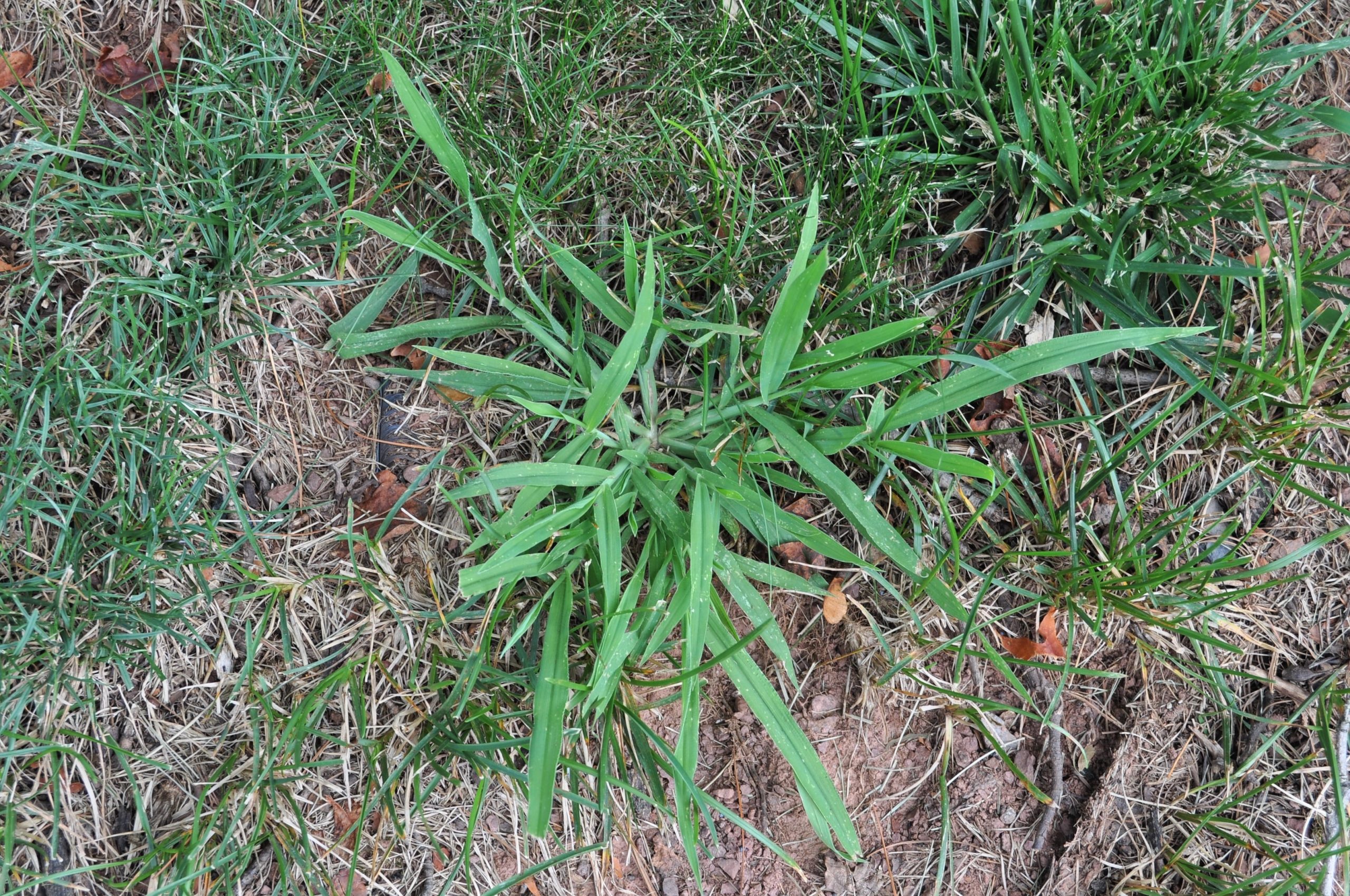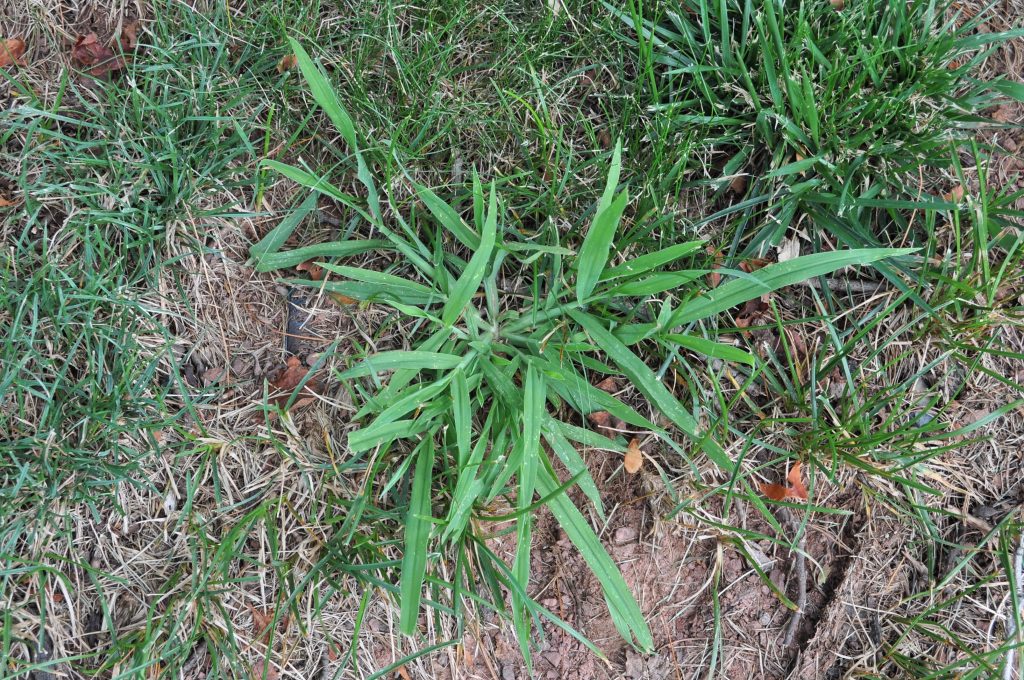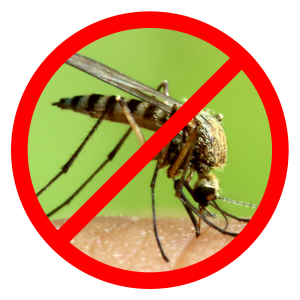The Importance of Crabgrass Control

The most common question we get in the early spring as lawn care professionals is “Isn’t it too early to apply the crabgrass preventer?” Since crabgrass becomes apparent in the lawn in the hot summer months, some may think the spring is too early to apply crabgrass control. In this blog we will discuss the appropriate time to apply a crabgrass pre-emergent as well as the importance of it on your turf for the rest of the year.
- This is what crabgrass looks like.
What is crabgrass?
So, what exactly is crabgrass? Basically, it’s a weedy grass that can grow anywhere, it grows fast and we can all agree that it looks bad in a lawn. It typically grows low to the ground and resembles a “crab-like” shape. This is an annual weed, which means it germinates in the spring, proliferates throughout the growing season, drops its seed for next season and then dies in the fall. In the following spring, the seeds germinate, and the process starts all over again.
Crabgrass is the most troublesome weed in lawns and can tolerate environmental extremes; including hot temperatures, drought conditions and full sun exposure. It is a coarse textured plant and lime green in color. It also has fine hairs along the leaves and leaf sheaths. One crabgrass plant can produce upwards of 150,000 seeds, making crabgrass a very big problem in the future years. Crabgrass plants can also tolerate very low mowing heights and can still produce seeds when cut at ½ inch short.
How to control crabgrass
A pre-emergence herbicide or “crabgrass preventer” controls crabgrass by stopping the seeds from germinating and spreading. Before crabgrass seeds get a chance to germinate, you want to apply a crabgrass preventer to the lawn each spring. Once the crabgrass germinates, the pre-emergence is not effective in preventing crabgrass.
When to apply pre-emergent
It’s important to apply your crabgrass pre-emergent in the spring, before the crabgrass germinates. Earlier is always better than later, because if you wait too long and the crabgrass seeds have germinated, the pre-emergent will not be nearly as effective. Unfortunately, the timing is based on soil temperatures so it can vary year to year. A good rule of thumb is to apply a pre-emergent between the beginning of March and the end of April. A second application can also be made about 4-8 weeks after the first, this will help prevent crabgrass from germinating later in the summer.
It is significantly easier to prevent crabgrass than it is to control it once it starts to grow. You may need multiple applications of post-emergent crabgrass control throughout the growing season to control the already matured crabgrass plant. Luckily, in the fall once soil temperatures dip below 56 degrees and we get our first frost, the crabgrass will start to die off on its own. It will start off by turning a purplish color and then It will leave brown skeletal remains behind and decompose on its own.
What happens if you don’t control crabgrass?
If you do not take care of the crabgrass on an annual basis, slowly over each season, more and more crabgrass plants germinate and take up a significant portion of the lawn. There may be some turf remaining; however, if your lawn is primarily made up crabgrass, you will need to reseed or have sod installed.
We would also like to mention that seeding requires a lot of upfront work to prepare the lawn, then bring in the right equipment to complete the seeding, followed by the big commitment of watering for the seed to germinate and grow. This process is time consuming and often very expensive.
Also, bare or thin spots in your lawn are more susceptible to crabgrass growth than a dense portion of lawn. These bare or thin spots present no competition to the crabgrass germinating, which lets the crabgrass populate. Even when you apply a crabgrass pre-emergent on your lawn, bare and thin areas are still susceptible to crabgrass germination. The best course of action is to spot seed bare or thin areas.
If you are going to do any seeding in the spring, it is important to understand the challenges that come with spring seeding. Unfortunately seeding in the spring means these areas can’t have the crabgrass pre-emergent or weed controls applied as these will adversely affect seed germination. We recommend waiting to do any large seeding renovations until late August through September. To learn more about spring seeding and its limitations, check out our recent blog.
How to apply crabgrass pre-emergent
The best way to use any lawn product is to read the label and follow the instructions from the manufacturer. If you use a product labeled for 10,000 square feet and apply that to a 15,000 square feet lawn, you will not have applied enough product and your crabgrass control will be limited. Read the label completely and follow it closely for the best results.
Conclusion
Crabgrass prevention is important for homeowners looking to have a maintained lawn. It not only looks bad but can take over sections of your lawn if left untreated. If you are in our service area and have questions about crabgrass control, request a free estimate online or call our office at 908-281-7888.





